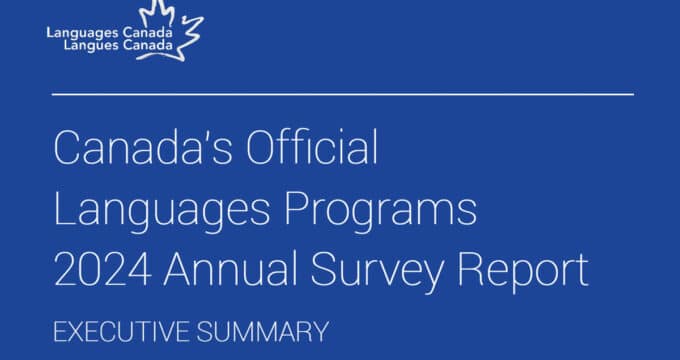New data shows value of education rises during economic crisis
The employment gap between young people who left high school early and those who completed post-secondary education has continued to widen during the global economic crisis. New data from the 2013 edition of the Organisation for Economic Cooperation and Development’s (OECD) annual Education at a Glance report shows conclusively that further education is the best way to offset a lack of work experience for young people, and a reliable path to improved opportunities for better earnings and employment prospects. The report compiles data for more than 20 indicators from the 34 OECD member states (along with non-members Argentina, Brazil, China, India, Indonesia, Russia, Saudi Arabia and South Africa) and across the educational spectrum from pre-school to doctoral studies. One of the most significant findings in the 2013 report is that unemployment rates are nearly three times higher among those who left high school early (13% on average across OECD countries) than among those who have a tertiary education (5%). An accompanying OECD media release for the report notes that:
“Between 2008 and 2011, the unemployment rate for the poorly-educated rose by around 4 percentage points, while it increased by only 1.5 percentage points for the highly educated.”
The OECD also reports a corresponding widening in the earnings gap between the highly educated and those with lower levels of education attainment. It finds that the average difference in employment income between the two has risen from 75% across OECD countries in 2008 to 90% in 2011, and that, on average, the relative earnings of tertiary-educated adults are more than 1.5 times that of adults with upper secondary education.
“Leaving school with good qualifications is more essential than ever,” said OECD Secretary-General Angel Gurría. “Countries must focus efforts on helping young people, especially the less well-educated who are most at risk of being trapped in a low skills, low wage future.”
OECD Deputy Director of Education Andreas Schleicher shares some of these report highlights. Watch the video and continue reading below.
Country by country comparisons
However, as the data tables below illustrate, there are notable variations in unemployment rates for those with less education across OECD countries. The Education at a Glance report observes:
“There are large differences between countries in the way the recession has shaped the social reality for young people."
The steep increases in youth unemployment between 2008 and 2011, especially among low-educated young people, in countries particularly affected by the global economic crisis are well-known:
- Estonia (a 17.6 percentage-point increase in unemployment among 25-34 year-olds without a secondary education);
- Greece (15.0 percentage-point increase);
- Ireland (21.5 percentage-point increase);
- Spain (16.0 percentage-point increase).
Less known is that, during the same period, some countries saw drops in unemployment among low-skilled youth, such as:
- Austria (-3.3 percentage points);
- Chile (-3.6 percentage points);
- Germany (-2.1 percentage points);
- Israel (-0.9 percentage point);
- Korea (-1.6 percentage points);
- Luxembourg (-1.0 percentage point);
- Turkey (-1.7 percentage points).
Vocational education pivotal
While acknowledging that many factors play a part in youth unemployment, the report zeroes in on a correlation in the data between participation in vocational training and declining rates of youth unemployment. The issue here is the extent to which “institutional arrangements between education and work facilitate transitions into employment.” Put another way, vocational programmes feature extensive workplace training and are often based around broadly based collaborations between institutions and business, and this opens the door to better employment prospects for vocational graduates. Quoting again from the report: “Countries that have a higher-than-average (32%) proportion of graduates from vocational programmes, such as Austria, the Czech Republic, Germany and Luxembourg, were all able to keep the increases in unemployment rates among this age group to below 8 percentage points. Conversely, countries such as Greece, Ireland and Spain, where less than 25% of young adults graduate from vocational upper secondary education, saw increases in unemployment rates of 12 percentage points or more among 25-34 year-olds with only secondary education."
"For young people who do not continue into tertiary education, vocational education clearly offers better prospects for their employability than general, more academically oriented upper secondary education.”
Investing in education
2013’s Education at a Glance is a stark demonstration of the relationship between a country’s investment in education - that is, both the scale and nature of that investment - and the outcomes for both individuals and national economies. And on this point, the report sounds a cautionary note in observing that the economic crisis has now reversed a long-term trend of increasing investment in education. Public spending on educational institutions fell by 1% on average (as a percentage of GDP) across OCED countries between 2009 and 2010, and education budget cuts were observed in 2011 and 2012 in 15 OECD member states. Some examples include:
- Public expenditure on educational institutions decreased in approximately 33% of countries during that period.
- Reductions by 2% or less were seen in Austria, Ireland, New Zealand, Norway, Portugal, Spain and the United States.
- Drops of more than 2% were seen in Estonia, Hungary, Iceland, Italy and Russian Federation.
- Between 2005 and 2010, spending per tertiary-level student dropped in eight countries - including Austria, Iceland, Israel, the United Kingdom and the United States - even as post-secondary enrolments continued to grow over that same period.
As Mr Schleicher emphasises in the video above,
“Our education today is our economy tomorrow, so we’re going to pay a price for those kinds of [spending cuts].”
For additional background on countries’ educational performance, please see our article reviewing the 2012 edition of OECD's Education at a Glance entitled "New national statistics compare education and student mobility in over 40 countries."


















